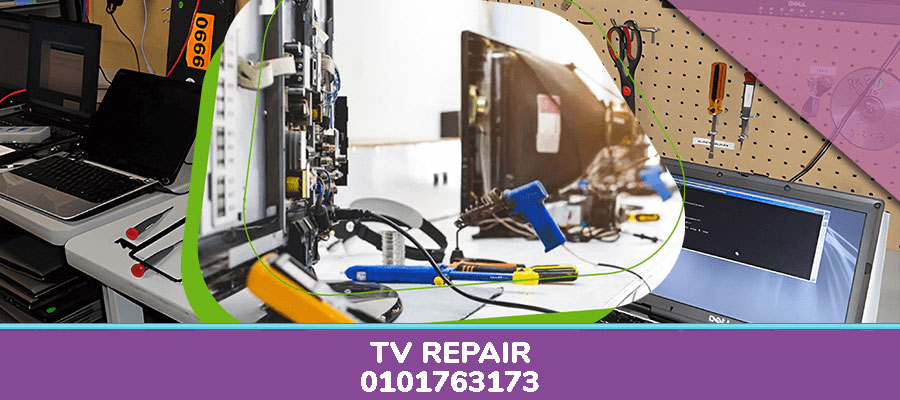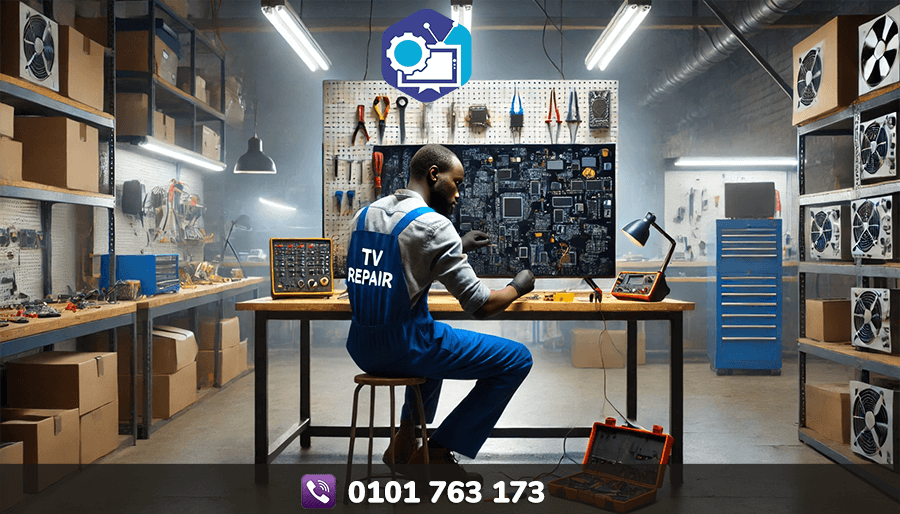Television Repair Services Center in Nairobi, Kenya
Television Repair KE is your trusted destination for reliable television repair services and TV spare parts in Nairobi. For broken TV screen repair / replacement, motherboard repair, signal & sound systems, Smart TV software & Services and more. Call 0101763173 for inquiries

GET YOUR TV FIXED TODAY!
What we can do for you
We are dedicated to keeping your entertainment devices in optimal condition. We are your trusted TV repair service provider, serving the Nairobi Metropolis region and beyond. Contact us to get your living room back alive, and, with a properly functioning television today.
TELEVISION SCREEN REPAIR
The Best and most reliable television screen repair and tv screen replacement services in Nairobi
TELEVISION MOTHER-BOARD
Get a Television Motherboard repair expert in Nairobi, Kenya today. Your TV board will be fixed instantly
TELEVISION BACKLIGHTS REPAIR
Television Backlights repair services and Backlights replacement service center in Nairobi County
TELEVISION WALL MOUNTING
Enjoy access to the best television wall mounting services in Nairobi, by calling 0101763173 Now!
TV SOUND & SPEAKERS REPAIR
Is your television sound not working? You can get a quick TV sound system repair in Nairobi Now!
TELEVISION SIGNAL REPAIR
Is the Television Signal not as crisp as you need it to be? The TV aerial isnt yielding results? Get it Fixed!
The Leading Local TV Repair Solution Provider
Professional Television Repair in Nairobi for all Television brands, Types and Sizes. Get Expert TV Repair in Nairobi for Samsung, LG, Hisense, TCL televisions, whether LCD, LED, OLED, QLED, Mini-LED, Micro-LED or CRT! Get all TV spare parts too! for instance TV Motherboards and Spare Parts, TV Screens, Wall Mounts, T-Boards, Y-Boards and more!
TV Repair for all Brands and Models
TV Repair for all Brands and Models
Samsung TV repair in Nairobi
LG TV repair in Nairobi
Hisense TV repair in Nairobi
TCL TV repair in Nairobi


We fix all Television Types!
LCD Television Repair Services
LED, OLED & QLED TV Repair Services
Mini-LED Television Repair Services
Micro-LED TV Repair Services
More Television Brands that get fixed here
Here are some more brands for which you can get excellent television repair services in Nairobi, Kiambu, machakos, Luthuli Avenue, Mombasa Road, Limuru, Kikuyu and the rest of Kenya. TV repair technicians are well versed in handling and fixing any common issues with these brands. Whether its a Samsung Television, LG, Bosch, Hisense, Sony, Sony Bravia, Panasonic or Bruhm Television, you will get the best repair services and durable television spare parts from TV Repair Kenya!
SAMSUNG TELEVISION REPAIR
Amazing Samsung TV Repair service in Nairobi, by expert TV technicians, using durable Television parts at great rates
PANASONIC TELEVISION REPAIR
Top Notch Panasonic TV Repair in Nairobi, delivered by tv repair experts at affordable service charges and parts prices
ROKU TELEVISION REPAIR SERVICES
Find the best Roku Television Fundis in your area today. Get your broken Roku Television fixed today, by requesting for help here.
AMAZON TV SERVICE
Reliable Amazon TV repair services done at home or our workshop along Waiyaki Way in Nairobi County. Get a Fix!
SONY TELEVISION REPAIR SERVICES
Sony TV Repair in Nairobi, done by top TV experts, with affordable TV Spare parts at affordable costs
INSIGNIA TV REPAIR SERVICES
The Best Insignia TV Repair service in Nairobi, by expert TV technicians, using durable Television parts at great rates
HISENSE TELEVISION REPAIR SERVICES
Reliable Notch Hisense TV Repair in Nairobi, delivered by tv repair experts at affordable repair costs and parts prices
PHILIPS TELEVISION REPAIR SERVICES
Find great Phillips Television Technicians in your area now. Get your broken Phillips TV repaired today, by calling for for help here.
TOSHIBA TELEVISION REPAIR SERVICES
Top Toshiba TV repair service rendered at your home or our workshop along Waiyaki Way in Nairobi County. Get a quick Fix!
ONEPLUS TELEVISION REPAIR SERVICES
Spectacular OnePlus TV Repair in Nairobi, done by expert TV technicians, with durable TV parts and Spares at good prices
SMART TELEVISION REPAIR SERVICES
Leading Smart TV Repair service in Nairobi, by expert TV technicians, using durable Television parts at great rates
VIZIO TELEVISION REPAIR SERVICES
Leading Vizio TV Repair service in Nairobi, by expert TV technicians, using durable Television parts at great rates
SKYWORTH TELEVISION REPAIR SERVICES
Skyworth Television Fixing in Nairobi, done by television repair experts. Affordable services and spare parts , reliable technicians.
TCL TELEVISION REPAIR SERVICES
Find the best TCL Television repair services in your area today. Get your TCL tv problems fixed instantly by experts in Nairobi.
BOSCH TELEVISION REPAIR SERVICES
Quick Bosch TV repair services in Nairobi County! Repairs are done at your home or our workshop along Waiyaki Way in Nairobi.
Stay Updated!
TV Repair Kenya furnishes you with periodic posts, articles and updates about televisions, television brands and models, television parts and spares, industry market updates and more. Follow our blog to stay updated on how to get the most out of your television, and how to get TV services in your area!
-
Thoome Estate Television Parts and Spares: Tvrepairkenya.com
Thoome Estate Television Parts and Spares: Tvrepairkenya.com Thoome Estate Television Spare parts from the leading local TV repair Service provider: Whether it’s catching up on…
-
Thigiri Television Parts and Spares: Tvrepairkenya.com
Thigiri Television Parts and Spares: Tvrepairkenya.com Thigiri Television Spare parts from the leading local TV repair Service provider: Whether it’s catching up on local news,…
-
Limuru Television Parts and Spares: Tvrepairkenya.com
Limuru Television Parts and Spares: Tvrepairkenya.com Limuru Television Spare parts from the leading local TV repair Service provider: Whether it’s catching up on local news,…
-
Riverside Television Parts and Spares: Tvrepairkenya.com
Riverside Television Parts and Spares: Tvrepairkenya.com Riverside Television Spare parts from the leading local TV repair Service provider: Whether it’s catching up on local news,…
-
Dagoretti Television Parts and Spares: Tvrepairkenya.com
Dagoretti Television Parts and Spares: Tvrepairkenya.com Dagoretti Television Spare parts from the leading local TV repair Service provider: Whether it’s catching up on local news,…
-
Riara Springs Television Parts and Spares: Tvrepairkenya.com
Riara Springs Television Parts and Spares: Tvrepairkenya.com Riara Springs Television Spare parts from the leading local TV repair Service provider: Whether it’s catching up on…
-
Riara Ridge Television Parts and Spares: Tvrepairkenya.com
Riara Ridge Television Parts and Spares: Tvrepairkenya.com Riara Ridge Television Spare parts from the leading local TV repair Service provider: Whether it’s catching up on…
-
Garden Estate Television Parts and Spares: Tvrepairkenya.com
Garden Estate Television Parts and Spares: Tvrepairkenya.com Garden Estate Television Spare parts from the leading local TV repair Service provider: Whether it’s catching up on…
-
Gateway Gardens Television Parts and Spares: Tvrepairkenya.com
Gateway Gardens Television Parts and Spares: Tvrepairkenya.com Gateway Gardens Television Spare parts from the leading local TV repair Service provider: Whether it’s catching up on…
-
Kitengela Television Parts and Spares: Tvrepairkenya.com
Kitengela Television Parts and Spares: Tvrepairkenya.com Kitengela Television Spare parts from the leading local TV repair Service provider: Whether it’s catching up on local news,…
-
Athi River Television Parts and Spares
Athi River Television Parts and Spares: Tvrepairkenya.com Athi River Television Spare parts from the leading local TV repair Service provider: Whether it’s catching up on…
-
Embakasi Television Parts and Spares: Tvrepairkenya.com
Embakasi Television Parts and Spares: Tvrepairkenya.com Embakasi Television Spare parts from the leading local TV repair Service provider: Whether it’s catching up on local news,…